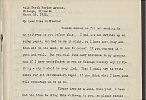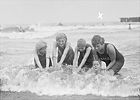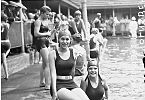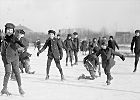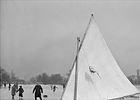Children have taken advantage of water in Chicago in all seasons and across its history. For children, lakes, rivers, and streams were more than a source of drinking water, an industrial sewer, or an economic highway. They have been places of play, recreation, and relaxation in all seasons. Children fished, explored, and swam along the water’s edge, as well as into the lake or river in boats (and on skates in the winter). Some of these activities were organized and directed by adults, like summer camps and lessons, while others were spontaneous activities instigated by children themselves. As the region grew and expanded, more of these waterfront sites were put into economic use while pollution despoiled others. This reduced, but did not eliminate, the opportunities for play. Park districts, both within Chicago and in suburban areas, built places for children to swim, boat, and fish within their bounds.
Photo Essay Sections:
|
|
|
|
|
|
|
|
The Encyclopedia of Chicago © 2004 The Newberry Library. All Rights Reserved. Portions are copyrighted by other institutions and individuals. Additional information on copyright and permissions.
